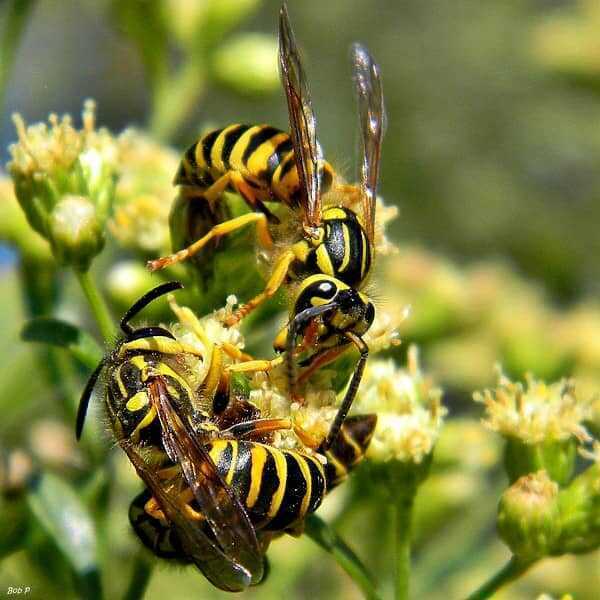Summer picnic season is upon us, and that means it is time to grab the sunglasses, cooler and sunscreen, and head outdoors. But people are not the only ones who want to enjoy the warm weather. Flying, stinging insects like bees and wasps are abuzz and make their presence known when collecting pollen and nectar as the weather warms.

“In the proper environment, bees, wasps, and yellow jackets can be very beneficial,” says Ron Harrison, entomologist and Orkin technical services director. “In addition to pollinating flowers and plants, they eat grubs, flies, and other harmful pests. It is when they are aggravated or feel threatened that they can be a bigger problem.”
There are more than 20,000 known bee species around the world. Their stings can be painful and may cause allergic reactions. About 2 million Americans are allergic to insect stings, according to the American College of Allergy, Asthma, and Immunology, and many of them are at risk of life-threatening reactions.
Carpenter bees are fairly large and are often mistaken for bumblebees. They can cause significant damage to decks, siding, landscape timbers, and even lawn furniture, but males – even though they are aggressive – do not have stingers and the females rarely sting. Females bore holes in wood to deposit their eggs.
Yellowjackets can sting multiple times and aggressively protect their colonies, but otherwise, are not quick to sting. They commonly nest on or near the ground under porches or steps, in sidewalk cracks, around railroad ties, or at the base of trees. Yellowjackets are also scavengers, so they can be found near garbage cans and picnics.
Paper wasps look similar to yellow jackets in that they are narrow and dark brown with black wings and yellow markings. Paper wasp nests are made from small wood or plant fibers combined with saliva and appear to be made from paper. Their nests – frequently found in sheltered areas like tree branches and eaves of houses – include numerous compartments where they lay their eggs and rear their young.
Be sure to contact a pest professional like Orkin before attempting to address a bee infestation or hive. Harrison offers the following tips to help avoid flying and stinging pests:
* Use a weed trimmer to thin vegetation near your home, as thick vegetation provides a place for both bees and wasps to nest.
* Don’t leave food or drink containers uncovered for long periods of time. Pests are attracted to human food sources and stinging pests can often enter cans unseen, so it is best to pour your drink into a glass.
* Fit screens and tighten seals properly on doors and windows to prevent pests from entering into your home.
* For those at risk of an allergic reaction, apply an EPA-registered insect repellent on clothing and exposed skin to deter bites and stings.